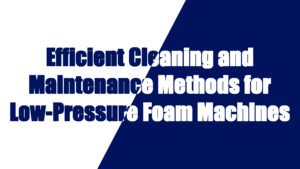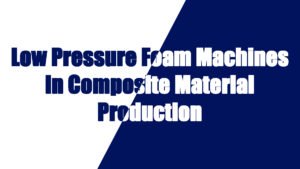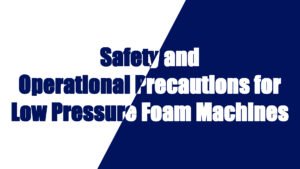When comparing polyurethane with other common insulation materials used in the construction, industrial, and appliance industries, it’s essential to evaluate their thermal performance, durability, cost, ease of installation, environmental impact, and other key factors. Below is a detailed comparison of polyurethane insulation against several other popular insulation materials: fiberglass, expanded polystyrene (EPS), extruded polystyrene (XPS), cellulose, Dan mineral wool (rock wool).
Thermal Performance (R-Value)
The R-value measures the insulation material’s ability to resist heat flow. A higher R-value indicates better insulating properties. Here’s how polyurethane stacks up:
Insulation Material | Thermal Conductivity (λ) (W/m·K) | R-value (per inch) |
Polyurethane (Rigid Foam) | 0.020 – 0.030 | 6.0 – 7.0 |
Fiberglass | 0.035 – 0.045 | 3.5 – 4.0 |
Expanded Polystyrene (EPS) | 0.032 – 0.038 | 3.8 – 4.0 |
Extruded Polystyrene (XPS) | 0.029 – 0.035 | 5.0 – 5.5 |
Cellulose | 0.032 – 0.038 | 3.2 – 3.8 |
Mineral Wool (Rock Wool) | 0.035 – 0.040 | 3.5 – 4.0 |
- Polyurethane foamhas one of the highest R-values per inch of thickness, making it highly efficient for thermal insulation.
- Fiberglass, EPS, Dan cellulosegenerally have lower R-values and require thicker layers to achieve the same thermal performance as polyurethane.
- XPShas a better R-value compared to fiberglass and EPS, but still falls short of polyurethane.
Moisture Resistance
Moisture resistance is a crucial factor for insulation materials used in areas with high humidity or exposure to water (e.g., basements, roofs, refrigeration).
Insulation Material | Moisture Resistance |
Polyurethane (Rigid Foam) | Excellent; highly resistant to moisture, does not absorb water |
Fiberglass | Poor; can absorb water, reducing thermal efficiency |
Expanded Polystyrene (EPS) | Moderate; water-resistant but can absorb moisture if exposed for long periods |
Extruded Polystyrene (XPS) | Very good; resistant to water absorption, better than EPS |
Cellulose | Poor; absorbs water, leading to mold and mildew growth if not protected |
Mineral Wool (Rock Wool) | Good; water-resistant but can absorb water, reducing effectiveness |
- Polyurethaneoffers the best moisture resistance, ensuring long-lasting insulation in damp environments.
- Fiberglass, cellulose, Dan mineral woolcan absorb moisture, leading to reduced performance and potential mold issues.
- XPS has better moisture resistance than EPS but still doesn’t match the level of protection provided by polyurethane.
Durability and Lifespan
Durability refers to the material’s ability to maintain its insulating properties over time, including resistance to physical damage, aging, and weathering.
Insulation Material | Durability and Lifespan |
Polyurethane (Rigid Foam) | Very durable, long lifespan (50+ years) with proper installation and protection |
Fiberglass | Can degrade over time, especially if exposed to moisture, but generally lasts 30+ years |
Expanded Polystyrene (EPS) | Can degrade from UV exposure, aging, and moisture, lasts around 20-30 years |
Extruded Polystyrene (XPS) | Durable and long-lasting (30-50 years), resistant to physical damage |
Cellulose | Degrades faster over time, especially if exposed to moisture, lasts about 20-30 years |
Mineral Wool (Rock Wool) | Very durable and resistant to aging, lasts 50+ years |
- Polyurethaneis one of the most durable insulation materials, with a lifespan of 50+ years.
- Fiberglass, XPS, Dan mineral woolare also durable, but their performance can be affected by moisture and other environmental factors.
- EPS Dan cellulose have shorter lifespans due to potential degradation from moisture and UV exposure.
Cost
Cost is a critical factor for large-scale insulation projects, especially in residential or commercial construction.
Insulation Material | Cost (per square foot) | Cost Efficiency |
Polyurethane (Rigid Foam) | $0.60 – $1.50 | Higher upfront cost, but high thermal efficiency and long-term savings |
Fiberglass | $0.40 – $1.00 | Low cost, but requires thicker layers for better performance |
Expanded Polystyrene (EPS) | $0.25 – $0.70 | Lower cost, but less efficient and less durable |
Extruded Polystyrene (XPS) | $0.50 – $1.20 | Mid-range cost, better than EPS but not as efficient as polyurethane |
Cellulose | $0.30 – $0.70 | Low cost, but performs poorly compared to others |
Mineral Wool (Rock Wool) | $0.50 – $1.20 | Mid-range cost, but lower thermal efficiency compared to polyurethane |
- Polyurethanehas a higher initial cost, but its superior insulation properties mean it can deliver significant savings on energy bills over time.
- Fiberglass, EPS, Dan celluloseare more affordable upfront, but they generally require more material to achieve the same thermal performance as polyurethane.
- XPS Dan mineral wool fall in the middle in terms of cost.
Environmental Impact
The environmental impact of insulation materials includes factors such as production processes, recyclability, and contribution to overall sustainability.
Insulation Material | Environmental Impact |
Polyurethane (Rigid Foam) | High environmental impact during production; some formulations are now using bio-based polyols and low-GWP (Global Warming Potential) blowing agents. Not easily recyclable, but more efficient and durable over time. |
Fiberglass | Generally considered environmentally friendly; made from sand, limestone, and recycled glass. It is recyclable, but energy-intensive to manufacture. |
Expanded Polystyrene (EPS) | Made from petroleum-based materials; not easily recyclable but can be reused in certain applications. Moderate environmental impact. |
Extruded Polystyrene (XPS) | Made from petroleum-based materials, not easily recyclable. It has a higher environmental impact due to the use of harmful blowing agents. |
Cellulose | Made from recycled paper, which gives it a lower environmental impact; recyclable and biodegradable. |
Mineral Wool (Rock Wool) | Made from natural rock, which is abundant and recyclable. It has a relatively low environmental impact, though energy-intensive to produce. |
- Polyurethanehas a higher environmental impact due to the chemicals involved in its production, though newer formulations are improving its sustainability.
- Fiberglass, cellulose, Dan mineral woolhave lower environmental impacts due to their use of natural or recycled materials.
- EPS Dan XPS have significant environmental challenges due to their petroleum-based production and poor recyclability.
Ease of Installation
The ease of installation depends on the material’s flexibility, weight, and whether it requires specialized techniques.
Insulation Material | Ease of Installation |
Polyurethane (Rigid Foam) | Easy to install, especially spray foam; provides a seamless application. However, spray foam requires professional installation. |
Fiberglass | Can be easily installed in batt or roll form but requires careful handling due to irritation from fibers. |
Expanded Polystyrene (EPS) | Easy to cut and install; often used in panel form. |
Extruded Polystyrene (XPS) | Easy to handle and cut; often used in board form. |
Cellulose | Requires professional installation (blown-in); can be messy but effective for attics and walls. |
Mineral Wool (Rock Wool) | Easy to install as batts, but can be heavier and more difficult to cut than fiberglass. |
- Polyurethanespray foam requires professional installation but provides a seamless, air-tight seal.
- FiberglassDan EPS are relatively easy to install but can be messier and require more effort to achieve a good seal.
- Mineral woolDan cellulose require more specialized installation techniques, particularly for blown-in products.
Conclusion
Insulation Material | Best Use |
Polyurethane | Best for high-performance insulation where space efficiency,moisture resistance, and long-term durability are key (e.g., in building envelopes, refrigeration, cold storage). |
Fiberglass | Ideal for cost-effective insulation in dry, non-moisture-prone environments (e.g., attics, ceilings). |
Expanded Polystyrene (EPS) | Suitable for low-cost applications but less durable and energy-efficient than polyurethane. Common in walls and floors. |
Extruded Polystyrene (XPS) | Good for moisture-prone areas like foundations, below-grade walls, and cold storage. |
Cellulose | Ideal for eco-friendly insulation in attics and existing walls where recycled content is a priority. |
Mineral Wool (Rock Wool) | Best for fire resistance, soundproofing, and high-temperature applications like industrial insulation. |
Ultimately, polyurethane is the best choice when you need high thermal performance, moisture resistance, and long-term durability, though it comes at a higher cost. For lower-cost options, fiberglass or cellulose may be sufficient, but they typically require more material to achieve the same performance.
Last Blog: News of Polyurethane and Insulation Industry



































